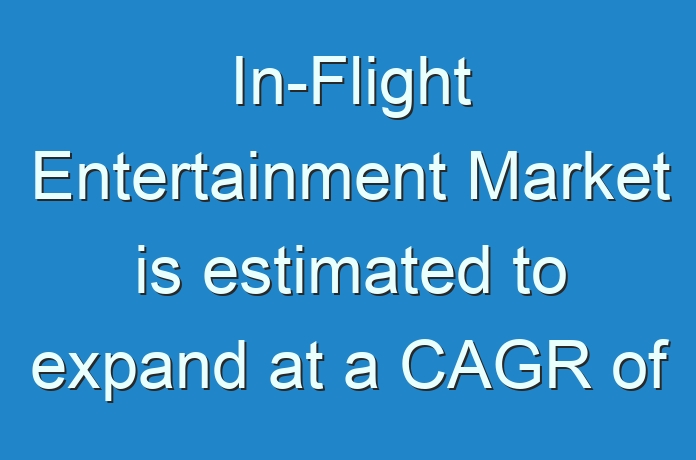
According to a new market report published by Transparency Market Research entitled “In-Flight Entertainment Market (Component – In-flight Entertainment Hardware, Communication System, Connectivity System, and Support Services; Fit – Line Fit and Retrofit; Application – Moving Map System, Audio System, Video System, In-flight Games, and Network Connectivity) – Global Industry Analysis, Size, Share, Growth, Trends and Forecast, 2019 – 2027,” the global In-Flight Entertainment market is expected to reach a value of US$ 11,801.4 Mn by 2027. The market is estimated to expand at a CAGR of 12.7% during the forecast period from 2019 to 2027.
Growing number of carriers of all sizes and hues world over are investing in complimentary in-flight entertainment system featuring a range of onboard entertainment experience, notes Transparency Market Research (TMR). The global in-flight entertainment (IFE) market finds the airlines putting large hopes on the system to generate ancillary revenues and catapult them to better their competitive edge. Domestic passengers in particular are drawn toward these IFE systems. Those on international flight have been one of the key consumer cohorts in the global in-flight entertainment market are opening up new demand potential for growing array of in-flight video and audio libraries.
Request a sample to get extensive insights into the In-flight Entertainment Market
Several airlines in the in-flight entertainment market are expected to bolster their on-board connectivity through collaborations with OTT providers. The move is helping help them offer onboard entertainment experience using passengers’ own devices. They are also partnering with video-on-demand platform providers for domestic flyers. Further, passengers are benefitting from the focus of airlines to aim for scalable and customizable onboard entertainment solutions. Over the past few years, especially in emerging economies, no-frill airlines have jumped on to the bandwagon by including in-flight entertainment options for their flyers.
Of the various components, hardware has emerged as the leading one in the global in-flight entertainment market and will contribute a revenue of US$ 7,098.5 Mn by 2027. The growth is fueled by the efforts of airlines to deploy better consumer interface technologies and low-maintenance hardware. A case in point is seat-centric technology.
Stuck in a neck-to-neck competition with other brands? Request a custom report on In-flight Entertainment Market
International flyers in the in-flight entertainment market have pinned revenue-generation hopes on advanced connectivity options. Availing better Wi-Fi networks have hooked passengers in various regions to go for in-flight entertainment. Airlines are planning to deploy cutting-edge platforms in their future fleets for bolstering wireless connectivity. The trend is gathering steam in the market. This aspect has been one of the key accelerators for the North America in-flight entertainment market.
On the other hand, Asia Pacific Excluding Japan (APEJ) and Japan are expected to gain sizable shares in the global in-flight entertainment market during the assessment period. The growing demand for customizable content for travel enthusiasts in the regional population is expanding avenues.
TMR Latest News Publication:





